Page 257 of 354

Convertible child safety seats
Properly used convertible child safety seats can
help protect toddlers and children over age one
who weigh between
20 and 40 lbs. (9 and 18 kg)
in a crash.
Fig. 242 Schemat ic overv iew: installatio n of the attac h
ments app lica ble to a LA TCH seat
Fig. 243 Schematic overv iew : installat io n of the seat using
the vehicle 's safe ty be lt syste m
.. When using the vehicle safety belt to install a
child safety seat, you must first activate the
convertible locking retractor on the safety belt
to prevent the child safety seat from moving
Q page 258 or install the seat us ing the LATC H
attachments .
.. Push the child safety seat down with your fu ll
weight to get the safety belt really tight so that
the seat cannot move forward o r sideways
more than one inch (2.5 cm)
Q page 258.
.. If the child safety seat is equipped with a tether
strap, attach it to the tether anchors
Q page264.
.. Secure unused safety belts on the rear seat
Q page 253.
~ A toddler or child is usually too large for an in-
;:::: fant restraint if it is more than one year old and
" 8 weighs more than 20 lbs . (9 kg) .
0 :r
Child safety
Toddlers and children who are older than one
year up to about 4 years old and weigh more than
20 lbs (9 kg) up to 40 lbs. (18 kg) must always be
properly restrained in a child safety seat certified
for their size and weight
Q fig. 242 and
q fig . 243.
The airbag on the passenger side makes the front
seat a potentially dangerous place for a child to
ride. The front seat is not the safest place for a
child in a forward -facing child safety seat. It is a
very dangerous place for an infant or a larger
child in a rearward-facing seat .
_&. WARNING
Not using a child safety seat, us ing the wrong
child safety seat or improperly instal ling a
chi ld restraint increases the risk of serious
personal injury and death in a collision or oth
er emergency situation.
- Children on the front seat of any car, even
with Advanced Airbags, can be seriously in
jured or even killed when an airbag inflates.
A child in a rearward-facing ch ild safety seat
installed on the front passenger seat will be
seriously injured and can be killed if the
front airbag inflates -even with an Ad
vanced Airbag System .
- The inflating airbag will hit the child safety
seat or infant carr ier with great force and
will smash the child safety seat and child
against the backrest, center arm rest, door
or roof.
-Al ways install rear-fa cing child safety seats
on the rear seat .
- If you must insta ll a rearward facing child
safety seat on the front passenger seat be
cause of excep tional circumstances and the
PASSENGER AIR BAG OFF light does not
come on and stay on, immediately install
the rea r-facing child safety seat in a rear
seating position and have the a irbag system
inspected by your Audi dealer .
- The rear side of the ch ild safety seat shou ld
be positioned as close as possible to the
backrest on the veh icle seat. Adjust the rear
seat head restraint if it is difficult to install
the child seat w ith the head restraint in
~
255
Page 258 of 354

Child safety
place Q page 210. Driving with head
restra ints that are not properly adjusted in
creases the risk of serious or fatal neck in
jury dramatically .
- Always read and heed all WARNINGS when
ever using a child restrained in a vehicle is
being used
c::> page 218, Safety belts,
¢ page 226 , Airbag system and
c::> page 248, Important information.
_& WARNING
If exceptional circumstances require the use
of a forward-facing child restra int on the
front passenger's seat, the child's safety and
well -being require that the fo llowing special
precautions be taken:
- Make s ure the fo rward-facing seat has been
designed and certified by its manu facturer
for use on a front seat with a passenger
front and side airbag.
- Always follow the manufacturer's instruc
tions prov ided with the child safety seat or
infant carrier.
- Always move the front passenger seat to
the highest position in the up and down ad
justment range and move it back to the
rearmost position in the seat's fore and aft
adjustment range, as far away from the air
bag as possible, before installing the for
ward-facing child restra int .
- Always make sure that the safety belt upper anchorage is beh ind the child restraint and
not next to or in front of the child restraint
so that the safety belt will be properly pos i
t ioned.
- Always make sure tha t noth ing p revents the
front passenge r's seat from being moved to
the rearmost position in its fore and aft ad
justment range .
- Always make sure the backrest is in an up
right position .
- Make s ure tha t the
PASSENGER AIR BAG
OFF
light comes on and s tays on all the time
whenever the ignition is switched on.
- If the ligh t does no t stay on, perform the
checks
c::> page 236, Monitoring the Ad
vanced Airbag System.
256
- Take the child restra int off the front passen
ger seat and install it properly at one of the rear seat positions if the
PASSENGER AIR
BAG OFF
light does not stay on whenever
the ignition is switched on .
Booster seats and safety belts
Properly used booster seats can help protect
children weighing between about 40 lbs . and 80
lbs . (18 kg and 36 kg) who are less than 4 ft.
9
in . (57 inches/1 .45 meters) tall .
Fig. 244 Rear seat: ch ild prope rly restrained in a booster
se at
The vehicle 's safety belts alone w ill not fit most
ch ildre n until they are at least 4 ft. 9 in . (57 in
ches/1.45 meters) tall and weigh about 80 lbs. (36 kg). Booster seats raise these ch ildren up so
that the safety belt will pass p roperly over the
stronger parts of their bodies and the safety be lt
can he lp protect them in a crash.
.,. Do not use the convertib le loc king re trac to r
when using the ve hicle's safety be lt to restra in
a child on a booster seat.
.,. The shoulder belt must lie as close to the cen
ter of the chi ld's collar bone as possible and
must lie flat and snug on the upper body. It
must never lie across the throat or neck. The
lap belt must lie across the pelvis and never
across t he stomach or abdomen . Make sure the
belt lies flat and snug . Pu ll on the belt to tight
en if necessary.
.,. If you must transport an o lde r child in a boos
ter sea t on the front passenge r seat, yo u can
use the safety belt height adjus tment to help
adjust the shoulder portion p roperly .
.,. Secure unused safety belts on the rear seat
c::> page253 .
Page 259 of 354

0 co .... N ,..... N .... 0 0 :c '
Children up to at least 8 years old (over 40 lbs or
18 kg) are best protected in chi ld safety seats de
signed for their age and we ight . Experts say that
the skeletal structure, particularly the pelvis, of
these children is not fully developed, and they
must not use the vehicle safety belts without a
suitable child restraint .
It is usually best to put these children in appro priate booster seats. Be sure the booster seat
meets all applicable safety standards .
Booster seats ra ise the seat ing pos ition of the
child and repos ition both the lap and shoulder
parts of the safety belt so that they pass across
the child 's body in the right places. The routing of
the belt over the child's body is very important
for the child's protection, whether or not a boos
ter seat is used. Chi ldren age 12 and unde r must
a lways ride in the rear seat.
Ch ildren who are at least 4 ft . 9 in . (57 inches/
1.45 meters) tall can genera lly use the veh icle's
three po int lap and shoulder be lts. Never use the
lap belt po rtion of the vehicle 's safety belt alone
to restrain any child, regardless of how big the
child is. A lways remember that children do not
have the pronounced pelvic structure required for
the proper function of lap belt portion of the ve hicle 's three point lap and shoulder belts. The
child's safety absolutely requires that a lap bel t
portion of the safety belt be fastened snugly and
as low as possible around the pelvis. Never let
the lap belt portion of the safety belt pass over
the child's stomach or abdomen.
In a crash, airbags must inflate within a blink of
an eye and with considerable force . In order to do
its job, the airbag needs room to inflate so that it
will be there to p rotect the occupant as the occu
pant moves forward into the a irbag.
A vehicle occupant who is out of position and too
close to the airbag gets in the way of an inflating
a ir bag. When an occupant is too close, he o r she
will be st ruck v iolently and will receive ser ious o r
possib ly even fatal injury.
In order for the airbag to offer p rotection, it is
i mportant that all vehicle occupants, espec ia lly
any chi ldren, who must be in the front seat be
cause of exceptional circumstances, be p roperly
Ch ild safety
restrained and as far away from the airbag as
possible . By keeping room between the chi ld's
body and the front of the passenger compart
ment, the airbag can inflate completely and pro
vide supplementa l protection in certain frontal
collisions .
A WARNING
-Not using a booster seat, using the booster
seat imp roperly, incorrect ly installing a boos
ter seat o r us ing the vehicle safety belt im
p roperly increases the r is k of serious personal
injury and death in a collision or other emer
gency situation. To help reduce the risk of se
rious personal injury and/or death:
- The shou lder belt m ust lie as close to the
center of the chi ld's collar bone as possible
and must lie flat and snug on the upper
body. It must never lie across the throat or
neck . The lap belt must lie across the pelvis
and never across the stomach or abdomen. Make sure that the belt lies flat and snug .
Pull on the belt to tighten if necessary.
- Fa ilure to properly route safety belts over a
child's body w ill cause severe injuries in an
accident o r othe r emergency situation
¢ page 218.
-The rear side of the ch ild safety seat should
be positioned as close as possible to the
b ackrest on the veh icle seat. Adjust the rear
seat head restrain t if it is diffi cult to install
the child seat with the head restraint in p lace ¢
page 210. Driving with head re
straints that are not properly adjusted in
creases the risk of serious or fatal neck in
jury dramat ically .
- Chi ldren on the front seat of any car, even
with Advanced Airbags, can be seriously in
jured or even k illed when an airbag inflates.
- Never let a chi ld put the shoulder belt under
the arm or behind the back, because it could
cause severe injuries in a crash.
- Never let a child stand or kneel on any seat,
for example the front seat.
- Never let a child r ide in the cargo area of
your veh icle .
- Always remember that a chi ld leaning for
ward, sitt ing sideways or out of position in
257
Page 260 of 354

Child safety
any way during an accident can be struck by
a deploying airbag. This will result in serious
personal injury or death.
- If you must install a booster seat on the
front passenger seat because of exceptional
circumstances the
PASSENGER AIR BAG
OFF
light must come on and stay on, when
ever the ignition is switched on .
- If the
PASSENGER AIR BAG OFF light does
not come on and stay on, perform the
checks described ¢
page 236, Monitoring
the Advanced Airbag System.
- Take the child restraint off the front passen
ger seat and install it properly at one of the
rear seat positions if the
PASSENGER AIR
BAG OFF
light does not stay on whenever
the ignition is switched on.
- Always read and heed all WARNINGS when
ever using a child restrained in a vehicle is
being used ¢
page 218, Safety belts,
¢ page 226, Airbag system and
¢ page 248, Important information.
Securing child seats
Securing a child safety seat using a safety
belt
Safety belts for the rear seats and the front pas
senger can be locked with the convertible locking
retractor to properly secure child safety seats .
The safety belts emergency locking retractors for
the rear seats safety belts and for the front pas
senger's seat safety belt have a convertible lock
ing retractor for child restraints. The safety belt
must be locked so that belt webbing cannot un
reel. The retractor can be activated to lock the
safety belt and prevent the saf ety belt webbing
from loosening up during normal driving. A child
safety seat can only be properly installed when
the safety belt is locked so that the child and
child safety seat will stay in place .
Always remember: Even though your vehicle is
equipped with an Advan ced Airbag system, all
children, especially those 12 years and younger,
should always ride in the back seat properly re
strained for their age and size.
258
A WARNING
Improperly installed child safety seats in-
crease the risk of serious personal injury and
death in a collision .
-
-Always make sure that the safety belt re
tractor is locked when installing a child
safety seat . An unlocked safety belt retrac
tor cannot hold the child safety seat in place
during normal driving or in a crash.
-Always buckle the child safety seat firmly in
place even if a child is not sitting in it. A
loose child safety seat can fly around during
a sudden stop or in a collision.
- Always make sure that the rear seat back
rest to which the center rear safety belt is
attached is securely latched whenever the
rear center safety belt is being used to se
cure a child restraint.
- If the backrest is not securely latched, the child and the child restraint will be thrown
forward together with the backrest and will strike parts of the vehicle interior. The child
can be seriously injured or killed .
- Never install rear-facing child safety seats
or infant carriers on the front passenger
seat . A child will be seriously injured and
can be killed when the passenger airbag in
flates .
- The inflating airbag will hit the child safety
seat or infant carrier with great force and
will smash the child safety seat and child
against the backrest, center armrest, door
or roof.
- Always install rear-facing child safety seats
or infant carriers on the rear seat.
- Forward-facing child safety seats or infant
carriers installed on the front passenger's
seat may interfere with the deployment of
the airbag and cause serious injury to the
child.
- It is safer to install a forward-facing child
safety seat on the rear seat.
- Always read and heed all WARNINGS when
ever using a child restrained in a vehicle is
being used ¢
page 248. Special precautions
apply when installing a child safety seat on
the front passenger seat ¢
page 22 7, Child .,.
Page 261 of 354

0 co .... N ,..... N .... 0 0 :c '
restraints on the front seat -some impor
tant things to know .
A WARNING
Always take special precautions if you must
install a forward or rearward-facing child re
straint on the front passenger's seat in excep
tional situations:
- Whenever a forward or rearward-facing
child restraint is installed on the front pas
senger seat, the
PASSENGER AIR BAG OFF
light must come on and stay on whenever
the ignition is switched on .
- If the
PASSENGER AIR BAG OFF light does
not come on and stay on, perform the
checks described~
page 236, Monitoring
the Advanced Airbag System.
- T ake the ch ild restraint off the front passen
ger seat and install it p roperly at one of the
rear seat positions if the
PAS SEN GER AIR
BAG OFF
light does not stay on whenever
the ignition is switched on .
- Improper installation of chi ld restraints can
reduce their effectiveness or even prevent
them from providing any protection.
- An improper ly installed chi ld restraint can
interfere with the airbag as it deploys and
seriously injure or even kill the child .
- Always carefu lly follow the manufacturer 's
instructions provided with the child safety
seat or carrier.
- Never place additional items on the seat
that can increase the total weight registered
by the weight-sensing mat and can cause in
jury in a crash .
A WARNING
Forward-facing child restraints :
-Always make sure the forward-facing seat has been designed and certified by its man
ufacturer for use on a front seat with a pas
senger front and s ide a irbag .
- Never put the forward-facing child restraint
up, against or very near the instrument pan
el.
-Always move the front passenger seat to
the highest position in the up and down ad-
Ch ild safety
justment range and move it back to the
rearmost posit ion in the seat's fore and aft
adjustment range, as far away from the air bag as possible , before installing the for
ward-facing child restraint.
- Always make sure that the safety belt upper
anchorage is behind the ch ild restraint and
not next to or in front of the child restraint
so that the safety be lt will be properly posi
tioned.
- Make sure that the
PASSENGER AIR B AG
OFF
li ght comes on and stays on a ll the time
wheneve r the ignit ion is switched on.
A WARNING
Rearward-facing ch ild restraints:
- A child in a rearward-fac ing ch ild safety sea t
installed on the front passenger seat will be
serio usly injured and can be killed if the
front airbag inflates -even with an Ad
vanced Airbag System.
- The inflating airbag will h it the ch ild safety
seat or infant carrier with great force and
will smash the child safety seat and child
aga inst the backrest, center armrest, door
or roof.
- Always be especially carefu l if you must in
stall a rearward facing child safety seat on
the front passenger seat in except iona l cir
cumstances.
- A t ight tether strap on a rearward-facing
child restraint attached to the front passen
ger seat can put too much pressure on the
weight-mat in the seat and reg ister a heav i
er weight in the Advanced Airbag System .
The heavier weight reg istered can make the
system work as though an ad ult we re on the
seat and deploy the Advanced A irbag when
it must be suppressed causing serious or
even fata l injury to the child.
- Make sure that the
PASSENGER AIR BAG
OFF
li ght comes on and stays on all the time
whenever the ignition is switched on .
- If the
PASSENGER AIR BAG OFF li ght does
not come on and stay on, immediately in
stall the rear-facing child safety seat in a rear seating posit ion and have the airbag
system inspected by your Audi dealer.
259
Page 262 of 354

Child safet y
Activating the convertible locking retractor
Use the convertible locking retractor to secure a
child restraint.
Always heed the child safety seat manufacturer 's
instructions when installing a child restraint in
your veh icle . To activate the convertible locking
retractor:
.,. Place the child restraint on a seat, preferab ly
on the rear seat.
.,. Slowly pull the belt
all the wa y out .
.,. Route it around o r through the ch ild restraint
belt path
~ ,&. .
""Pu sh the child safety seat down wit h your fu ll
weight to get the s afety be lt rea lly tight.
.,. Inse rt the belt tongue into the buckle for that
seating position .
.,. Guide the safety belt back into the retractor un
ti l the belt lies flat and snug on the child safety
seat.
.,. You should hear a "clicking" no ise as the belt
winds back into the inertia reel. Test the con
vertib le locking ret ractor by pu lling on the belt .
Yo u should no longer be ab le to pu ll the belt
out of the retracto r. The conve rtible locking re
tra cto r is now act ivated .
.,. Make s ure that the red release b utton is fac ing
away from the child restraint so that it can be
u nbuck led q uickly.
.,. Pull on the be lt to make sure the safety belt is
properly tight and fastened so that the seat
cannot move forward or sideways more than
one inch (2 .5 cm) .
A WARNING
Using the wrong child restra int or an im prop
erly installed ch ild rest raint can cause ser ious
perso nal in jury o r de ath in a crash.
- Always make sure tha t the safety belt re
t ra ctor is loc ked when ins tall ing a child
safe ty seat. An unlocke d safety bel t re trac
tor cannot hold the child safety seat in place during no rma l driving or in a crash .
- Always buckle the child safety seat firmly in
place even if a child is not s itting in it. A
loose child safety seat can f ly arou nd du ring
a sudden stop or in a crash.
260
- Always make sure the seat back rest to which
the child restraint is installed is in an up
r ight position and securely latched into
place and cannot fold forward. Otherw ise,
the seatback with the child safety seat at
tached to it could fly forward in the event of
an accident o r othe r emergency s ituation.
- Always read and heed all WARNINGS when
eve r us ing a child restrained in a vehicle is
be ing used~
page 248. Spe cial p recau tions
ap ply when installing a child safety seat on
the front passenge r seat ~
page 22 7, Child
restraints on the front seat -some impor
tant things to know .
' Deactivating the convertible locking
retractor
The convertible locking retractor for child re
straints will be deactivated automatically when
the belt is wound all the way back into the re
tractor .
.,. Press the red button on the safety belt buck le.
The belt tongue will pop out of the buckle.
.,. Guide the safety be lt all the way back into its
stowed posit io n.
Always let the safety be lt retract completely into
i ts stowed pos it ion. The safety be lt can now be
u sed as an ord inary safety belt w it h out the con
vertib le locking retractor for ch ild restraints .
If the conve rtible locking retractor should be ac
tivated inadvertently, the safety belt must be un
fastened and guided comp letely back i nto its
stowed pos ition to deactiva te th is feature . If the
conve rtible locking retractor is not deactivated,
the safety be lt will g radually become t ighter and
u n comfortab le to wear.
A WARNING
Improperly installed c hild safety seat s in
crease the r is k of serious personal injury and
death in a co llision.
-
- Never unfasten the safety belt to deactiv ate
the convertible locking ret ractor fo r ch ild re-
straints wh ile the vehicle is mov ing. You
~
Page 263 of 354

C) C0 ....
"' " "' .... 0 0 :r
would not be restrained and could be
seriously injured in an accident.
- Always read and heed all WARNINGS when
ever using a child restrained in a vehicle is
being used
c::> page 248 . Special precautions
apply when installing a child safety seat on
the front passenger seat
c::> page 22 7, Child
restraints on the front seat -some impor
tant things to know.
LATCH system (Lower
anchorages and tethers
for children)
Child Restraint System anchors and how
are they related to child safety
To provide a simpler and more practicable way to
attach the child restraint on the vehicle seat,
Federal regulations require special lower ancho
rages in vehicles and devices on new child re
straints to attach to the vehicle anchorages.
In the United States, the combination of the
tether anchorages and the lower anchorages is
now generally called the LATCH system for
" L ower Anchorages and Tethers for Children" . In
Canada, the terms "top tether" w ith "lower uni
versal anchorages" (or "lower universal anchor age bars") are used to describe the system.
In other countries the term ''ISO FIX" is used to
describe the lower anchorages .
Forward-facing child restraints manufactured af
ter September 1, 1999, are required by U .S. fed
eral regulations to comply with new child head
movement performance requirements. These
new performance requirements make a tether
necessary on most new child seats.
Installing a child restraint that requires a top
tether without one can serious ly impair the per
formance of the chi ld restraint and its ability to
protect the child in a collision. Installing a child
restraint that requires a top tether without the
top tether may be a v iolation of state law.
Ch ild restraint manufacturers offer LATCH lower
anchorages on the ir ch ild seats with hook-on or
Child safety
push-on connectors attached to adjustable
straps.
In addition to the LATCH lower anchorages, these
child rest raint systems usua lly require the use of
tether straps to help keep the child restraint
firmly in place.
A WARNING
-
Improper installation of child restraints will
in crease the risk of injury and death in a
crash.
-Always follow the instructions provided by
the manufacturer of the child restraint you
intend to insta ll in your vehicle.
- Never install a child restraint without a
proper ly attached top tether strap if t he
child restraint manufacturer's instructions
require the top tether strap to be used.
- Improper use of child restraint LATCH lower
anchorage points can lead to injury in a colli
sion. The LATC H lower anchorage points are
des igne d to withstand only those loads im
posed by correctly fitted child restraints.
- Never mount two child restraint systems on
one LATCH lower anchorage point.
- Never secure or attach any luggage o r other
item to the LA TCH lower anchorages.
Location
Fig. 245 Schematic overv iew: LATCH anchorage poi nt loca
tio ns
T he illustration shows the seating locations in
your vehicle which are equipped with the lower
anchorages system.
261
Page 264 of 354

Child safety
Description
The lower anchorage positions are marked for
quick locating .
Fig. 246 Rear seatbacks: locator buttons for lower ancho
rag es
/(
Fig. 247 Rear seats: lower anchorage bracket locations
Attachment lo cator m arke rs for lo wer
a nchorages
:c
~ I
Circular locator buttons on the rear seatback in
d icate the lower anchorage locations on the rear
seating positions
Q fig. 246.
Lowe r ancho rages
The lower anchorage attachment points are lo
cated between the rear seatback and rear seat
cushion
Q fig . 247 .
Lower anchorages secure the child restraint in
the seat without using the vehicle's safety belts .
Anchorages provide a secure and easy-to -use at
tachment and m inim ize the possibility of improp
er ch ild rest raint insta llation .
All child restraints manufactured after Septem
ber 1, 2002, must have lower anchorage attach
ments for the
LATCH system .
Remember that the lower anchorage points are
only intended for installation and attachment of
262
child restraints specifically certified for use with
LATCH lower anchorages. Child restraints that
are not equ ipped with the lower anchorage at
tachments can still be installed in compliance
with the chi ld restraint manufacturer's instruc
tions on us ing vehicle safety be lts .
_& WARNING
Imp roper use of LATCH lower anchorages can
cause ser ious persona l injury in an accident.
-Always carefully follow the ch ild restraints
manufact urer's ins tructions for proper in
stallation of the child restraint and prope r
use of the lower an chor ages or safety belts
in your vehicle .
- Never secure or attach any luggage or othe r
items to the
LATCH lowe r anchorages.
- Always read and heed the important infor
mat ion about ch ild rest raints in this chap ter
and WARNI NGS
Q page 248, Child safety .
Guidance fixtures for lower anchorages
Special guidance fixtures increase the conven
ience of the lower anchorages and are available
from your authorized Audi dealer.
Fig . 248 Oute r rear seats: install ing the guidance fixtures
Fig. 249 Close -up: fitting the guidance fixture ove r the
lower anchorage b racket
 1
1 2
2 3
3 4
4 5
5 6
6 7
7 8
8 9
9 10
10 11
11 12
12 13
13 14
14 15
15 16
16 17
17 18
18 19
19 20
20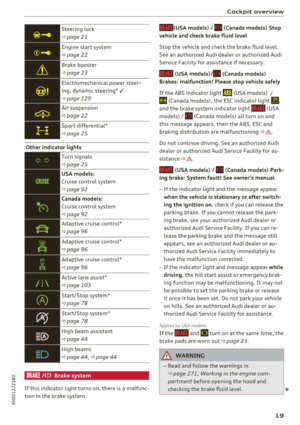 21
21 22
22 23
23 24
24 25
25 26
26 27
27 28
28 29
29 30
30 31
31 32
32 33
33 34
34 35
35 36
36 37
37 38
38 39
39 40
40 41
41 42
42 43
43 44
44 45
45 46
46 47
47 48
48 49
49 50
50 51
51 52
52 53
53 54
54 55
55 56
56 57
57 58
58 59
59 60
60 61
61 62
62 63
63 64
64 65
65 66
66 67
67 68
68 69
69 70
70 71
71 72
72 73
73 74
74 75
75 76
76 77
77 78
78 79
79 80
80 81
81 82
82 83
83 84
84 85
85 86
86 87
87 88
88 89
89 90
90 91
91 92
92 93
93 94
94 95
95 96
96 97
97 98
98 99
99 100
100 101
101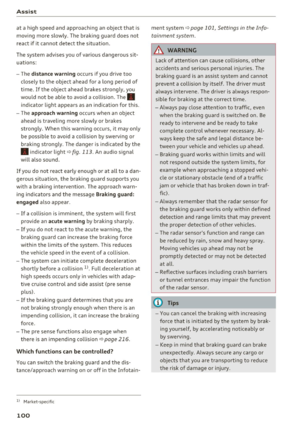 102
102 103
103 104
104 105
105 106
106 107
107 108
108 109
109 110
110 111
111 112
112 113
113 114
114 115
115 116
116 117
117 118
118 119
119 120
120 121
121 122
122 123
123 124
124 125
125 126
126 127
127 128
128 129
129 130
130 131
131 132
132 133
133 134
134 135
135 136
136 137
137 138
138 139
139 140
140 141
141 142
142 143
143 144
144 145
145 146
146 147
147 148
148 149
149 150
150 151
151 152
152 153
153 154
154 155
155 156
156 157
157 158
158 159
159 160
160 161
161 162
162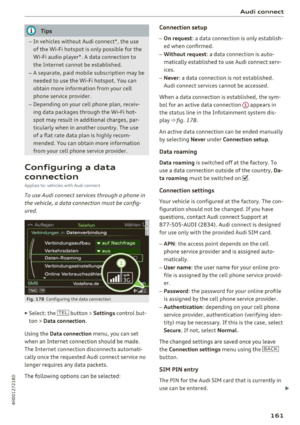 163
163 164
164 165
165 166
166 167
167 168
168 169
169 170
170 171
171 172
172 173
173 174
174 175
175 176
176 177
177 178
178 179
179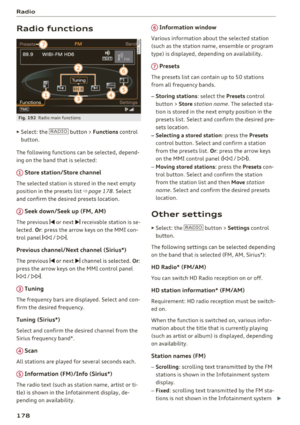 180
180 181
181 182
182 183
183 184
184 185
185 186
186 187
187 188
188 189
189 190
190 191
191 192
192 193
193 194
194 195
195 196
196 197
197 198
198 199
199 200
200 201
201 202
202 203
203 204
204 205
205 206
206 207
207 208
208 209
209 210
210 211
211 212
212 213
213 214
214 215
215 216
216 217
217 218
218 219
219 220
220 221
221 222
222 223
223 224
224 225
225 226
226 227
227 228
228 229
229 230
230 231
231 232
232 233
233 234
234 235
235 236
236 237
237 238
238 239
239 240
240 241
241 242
242 243
243 244
244 245
245 246
246 247
247 248
248 249
249 250
250 251
251 252
252 253
253 254
254 255
255 256
256 257
257 258
258 259
259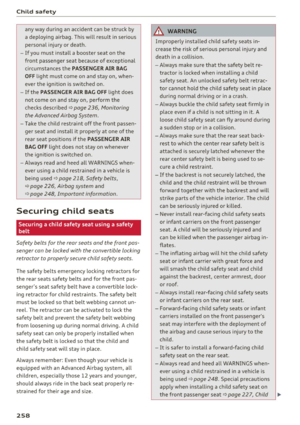 260
260 261
261 262
262 263
263 264
264 265
265 266
266 267
267 268
268 269
269 270
270 271
271 272
272 273
273 274
274 275
275 276
276 277
277 278
278 279
279 280
280 281
281 282
282 283
283 284
284 285
285 286
286 287
287 288
288 289
289 290
290 291
291 292
292 293
293 294
294 295
295 296
296 297
297 298
298 299
299 300
300 301
301 302
302 303
303 304
304 305
305 306
306 307
307 308
308 309
309 310
310 311
311 312
312 313
313 314
314 315
315 316
316 317
317 318
318 319
319 320
320 321
321 322
322 323
323 324
324 325
325 326
326 327
327 328
328 329
329 330
330 331
331 332
332 333
333 334
334 335
335 336
336 337
337 338
338 339
339 340
340 341
341 342
342 343
343 344
344 345
345 346
346 347
347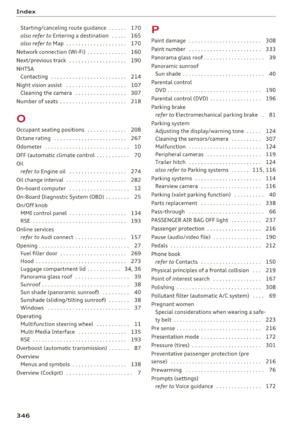 348
348 349
349 350
350 351
351 352
352 353
353






